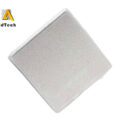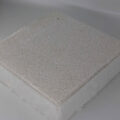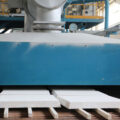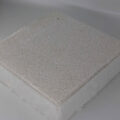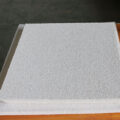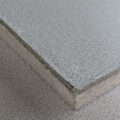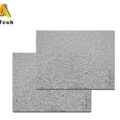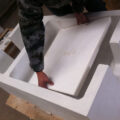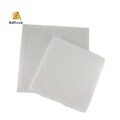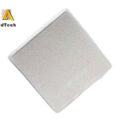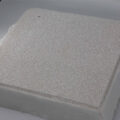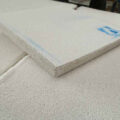Molten Metal Filter has the advantages of good chemical stability, high specific strength, high-temperature resistance, thermal shock resistance, large specific surface area, etc., and good slag removal effect, easy operation, easy to match with other parts, and low cost. Therefore, it has become a conventional purification method in the production of aluminum alloys. Studies have shown that removing slag can also reduce the hydrogen content in the aluminum melt. With the increasing demands on the quality of aluminum products, the requirements on the quality of filtration are also increasing.
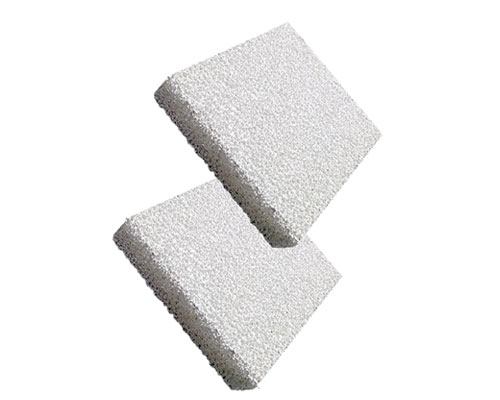
Structure of Molten Metal Filter
The usual manufacturing method of foam ceramic filter is to immerse the polyurethane sponge into the ceramic mud, squeeze out the excess, and dry. Finally, it is sintered at a high temperature to form a three-dimensional porous ceramic material, which is a curved and interconnected pipe with uneven thickness. It is precisely this uneven tube wall that plays a key role in capturing fine inclusions in the aluminum melt. This structure also increases the path through which the chance of the aluminum melt contacting the ceramic part of the filter is increased, thereby increasing the probability of inclusion particles being adsorbed.
Filtering Function of Molten Metal Filter
The ceramic filter can not only effectively remove the large heterogeneous impurities in the aluminum liquid, but also filter out the fine inclusions of a few microns that cannot be removed by the traditional process. The hydrogen atoms and other harmful ions in the aluminum liquid are often adsorbed on the inclusions, and the inclusions can become the core of bubble formation. Therefore, while filtering out the inclusions, it can also reduce the content of these harmful elements and gases in the aluminum liquid. Some studies also believe that the filter disc filters out many small inclusions, thus reducing the effective crystal nucleus required for the solidification of aluminum liquid. It can promote the growth of aluminum nuclei under large supercooling conditions, refine the structure, and improve product performance.
Filtration Mechanism
The main purpose of using a foam ceramic filter is to remove the inclusions in the aluminum melt. Inclusions usually exist in three forms in the melt: metal oxides; foreign particles such as refractory crumbs; particles introduced during melt processing.
Generally, there are three ways to remove particles suspended in the melt: sedimentation, particles accumulate at the bottom of the melt; floating, inclusions floating on the surface of the melt; filtration, the particles are separated from the melt through a porous medium.
Natural sedimentation generally occurs when the particle density and diameter are large, and particles smaller than 90pm are not very effective by static sedimentation. The bubbles or molten flux generated during the traditional gas dehydrogenation or flux treatment can make the inclusion particles float to the surface of the melt. This mechanism is effective for removing inclusions above 30um on most occasions. Filtration refers to the process in which the melt flows through densely packed spheres, glass fiber fabrics, metal mesh, foam ceramic filter, or other porous media to separate the inclusion particles from the melt. The advantage of the foam ceramic filter is that it can remove inclusion particles whose diameter is much smaller than its own through holes.

